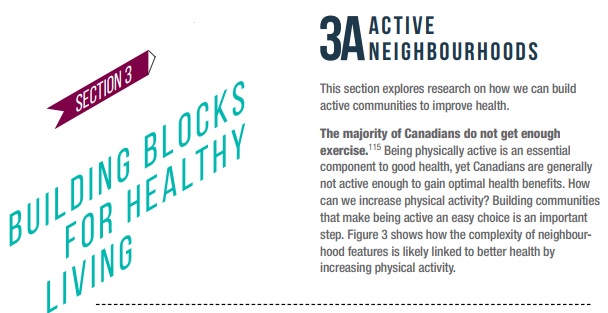
The design of our communities has significant impact on our health and well-being. This is a concept that has increasingly become central to our work at TCAT, and we are thrilled to see the link between design and healthy living becoming more central to the public health conversation across Canada as a whole.
Recently, the Chief Public Health Officer of Canada, Dr. Theresa Tam, released their report on the State of Public Health in Canada in 2017, which is focused on Designing Healthy Living. The report “raises awareness about how our built environment provides a foundation for healthy living, and ultimately our health” (p. 3). It explores the complex relationship between built environment, people’s behaviour, and their health status, and also presents some building blocks for healthier built environments.
We are honoured that the Chief Public Health Officer selected this focus overall, and that the report references our Active Neighbourhoods Canada participatory planning project as a federal program that supports designing healthy Canadian communities. In Section 5 of the report, Designing communities for healthy living in Canada, the Chief Public Health Officer discusses the importance of cross-sectoral collaboration and citizen engagement in building healthy communities. As a project funded by the Public Health Agency of Canada, Active Neighbourhoods Canada has developed a “co-design” approach to designing cities for healthy living, which involves supporting local residents to take an active role in determining beneficial changes to their neighbourhoods, in collaboration with design professionals. Our approach makes urban planning accessible, community-driven, and fun, and it is grounded in the belief that blending local knowledge and expert knowledge leads to strong outcomes. By working with neighbourhoods that are typically under-served with regard to infrastructure—and as a result experience negative public health outcomes—this participatory approach helps integrate a health equity lens to city design.
